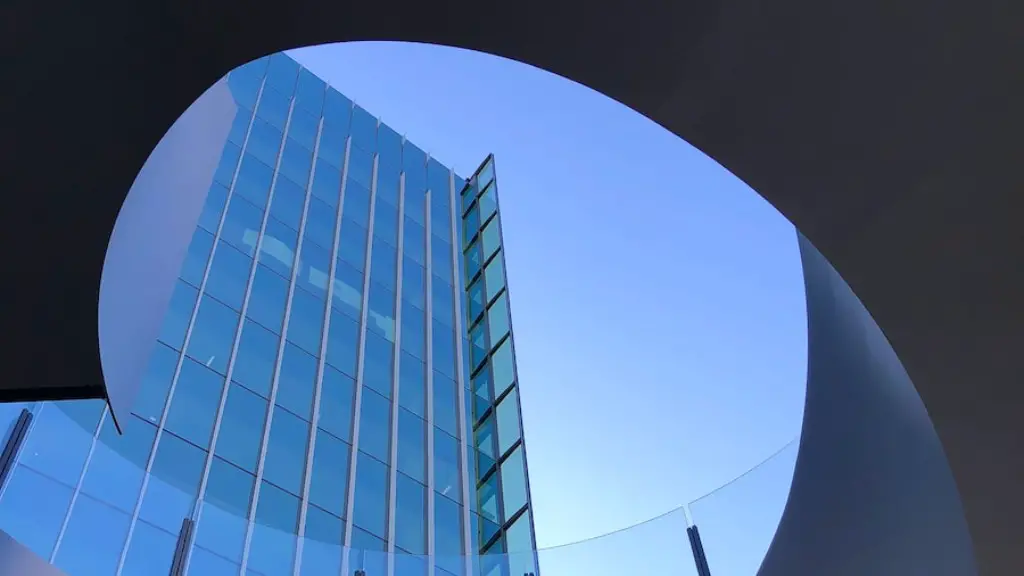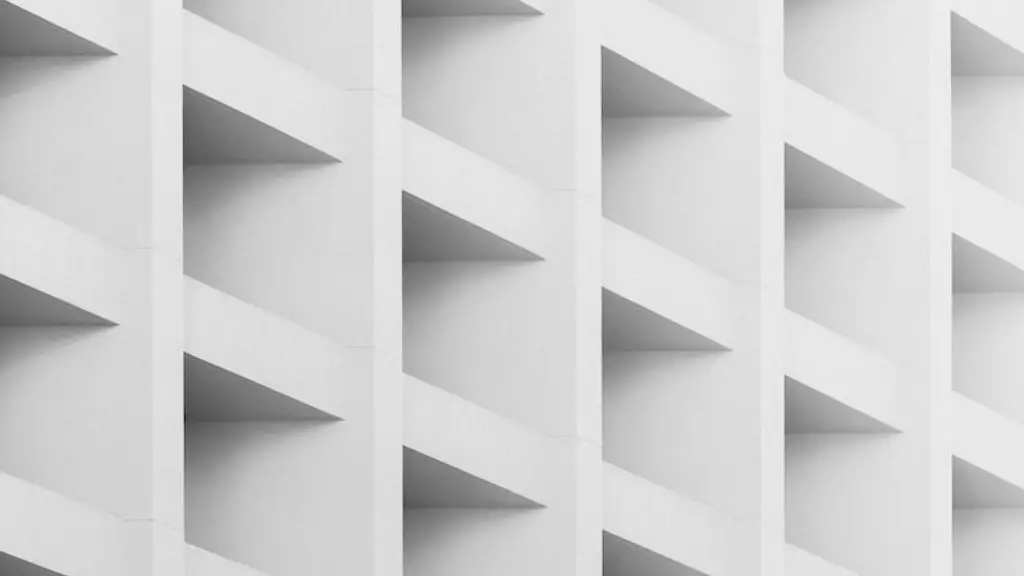Core Problems when Dealing with Architectural Projects and 16GB RAM
For architects and construction professionals, the technology they use to design, develop and render projects must keep up with their ever-changing needs. It’s no surprise, then, that computers and software have become indispensable to the wellbeing of their projects. One of the core challenges architects face is figuring out what hardware or software to use in order to get their work done.
When it comes to the RAM demands of architectural projects, the main question is: is 16GB enough? To answer this question, one must understand the various tasks that are frequently performed by architects. These tasks typically involve complex calculations, real-time simulations, 3D imaging, and other operations that can take up large portions of RAM. For example, when running a program such as 3D Studio Max for an architectural project, the system typically requires 8GB of RAM just to get started.
Software programs like VRay are even more intense, requiring 16GB of RAM to perform adequately. Even if the project is not overly memory-intensive, the program itself might be. Therefore, for the utmost stability, 16GB of RAM is the minimum amount recommended for most architectural projects.
Experts in the field suggest that 16GB of RAM can be enough in many cases. This is especially true if the project is simple: rendering static images and minor 3D modeling should pose no problem with 16GB of RAM. The key is to understand the RAM needs of each project and plan accordingly: if the project demands more than 16GB of RAM, a user should look into upgrading their system or using other services that are more powerful.
Architects also need to think about how they organize their RAM efficiently. The way in which a person sets up their computer to use RAM can also influence the amount of RAM needed for a given task. By specializing the system for the architectural application, a person can benefit from increased speed and efficiency.
Still, 16GB of RAM is no guarantee that the system will be able to handle any amount of data. Some software is simply too complex, especially if 3D modeling, animation, or large render jobs are needed. In such cases, the need for more RAM becomes evident. This is especially true when it comes to rendering or using applications such as Maya or 3Ds Max.
However, 16GB of RAM is usually enough for the majority of architectural projects and is the minimum requirement for most professional applications. If a user needs more RAM to work on their project, they can always upgrade their system.
When Do I Need More than 16GB RAM for Architecture?
The amount of RAM needed to properly and efficiently run architectural projects can vary greatly depending on the size and complexity of the project and the applications being used. While 16GB of RAM is usually sufficient for most applications, larger projects such as 3D renders and animation will require more RAM.
The amount of RAM needed to render or animate large projects can quickly reach 24GB or more. Photographic images and videos can require even more. Furthermore, larger projects may require long calculations and simulations, meaning a large amount of RAM is needed to get the job done. Although it’s possible to work with 16GB of RAM, using more will result in improved performance and productivity.
Of course, this depends on the user’s hardware: If the processor or graphics card on the user’s computer is not up to the task, even more RAM won’t be able to help them. A faster processor or a better graphics card can also be beneficial if a user is running multiple architectural programs simultaneously.
In any case, the bottom line is that the amount of RAM needed for an architectural project depends on the complexity of the project and the applications being used. 16GB of RAM usually proves to be suffice for most projects, but larger projects may require more RAM to work effectively.
Selecting GPUs and CPUs for Architecture
Due to the complexity of architectural projects, it’s important to make sure that the CPU and GPU on the user’s computer can handle the demands placed on them. Although RAM is a crucial component of this process, the processor and graphics card are equally important. Selecting the right processor and graphics card can have a huge impact on the performance of the computer.
For most projects, a graphics card with at least 3GB of video memory is recommended. If a user has a 64-bit operating system, they should make sure to select a CPU that supports 64-bit architecture. This will allow the user to take full advantage of the RAM they have installed. As for the processor itself, quad-core processors are recommended for most applications.
For 3D rendering and animation, a high-end graphics card is usually the best option. For example, the NVIDIA GeForce series cards are commonly used for high-performance graphics and video production. A card such as the GeForce RTX 3090 will ensure that the user’s computer can handle the most intensive tasks.
The CPU is also important for complex projects. It’s highly recommended to select a CPU with at least 8 cores, such as the AMD Ryzen 9 5900X. This will help the user maximize the performance of their system, allowing them to complete projects faster and with less difficulty.
When it comes to the CPU and GPU, the user should always select components that can handle the task at hand. For the best performance, a powerful graphics card and a fast processor should be paired with sufficient RAM. The combination of these components will sit a user up for success.
Storage Preparations for Architecture
Storage considerations when preparing for architectural projects are just as important as RAM and processor speed. The space needed for the project depends on the size of the project and the software being used. The user should always make sure that their storage can handle the project.
For example, when working with programs such as 3Ds Max, the user should make sure that the system drive has enough space for the application and all of the data it needs to store. A minimum of 50GB is recommended for most applications and 3D modeling projects. That being said, larger projects may require more space.
The user should also consider external storage devices for larger projects that require an abundance of space. Solid state drives (SSD) are highly recommended, as they are significantly faster than hard disk drives (HDD). Furthermore, the user should configure their media folders to a separate drive. This will allow the system to access media files faster and more efficiently.
Finally, the user should back up their projects regularly. This will prevent any data from being lost in the case of a system crash. Backups can also help the user restore their computer if necessary.
System and Software Considerations for Architecture
When working with architectural projects, it’s also important to make sure that the system is properly configured. This includes settings such as display settings, as well as preferences for file locations and program settings. By configuring the system correctly, the user can make sure that their projects are running as efficiently as possible.
Additionally, the user should make sure that the software they are using is properly configured. This includes settings such as the graphics settings, display options, rendering presets, and other parameters. Configuring the software settings to their particular needs can help the user maximize the performance of their system, allowing them to get their project done faster.
When configuring the system, the user should also check for any system updates that are available. This includes updates for the operating system, graphics drivers, processor drivers, and other components. Keeping the system up to date will ensure that the user’s machine is running optimally for their project.
The user should also make sure to update their software. This includes both the architectural software and any rendering or animation applications they are using. By keeping the software up to date, the user can take advantage of the latest features and bug fixes, as well as ensuring compatibility with any third-party plugins they may be using.
Safety Precautions for Architecture
Finally, proper safety precautions should always be taken when working with architectural projects. This includes taking basic safety measures such as using anti-virus software and firewalls, and ensuring that the system is properly backed up in case of an emergency.
The user should also install any necessary updates for their software and hardware in order to prevent any potential data loss. It’s also recommended to turn off the computer when it’s not in use. Doing this will help reduce the risk of system failure and potential data loss.
Furthermore, the user should regularly clean their hardware components. This includes cleaning any dust and dirt from the internal components of the computer, such as the fans, vents, and chipsets. This will help keep the system running at optimal performance, increasing the lifespan of the computer.
Finally, the user should regularly check and calibrate their monitor and printer settings. This will help ensure that the final output is of high quality. Regular maintenance of the hardware and software is an important part of any architectural workflow.





